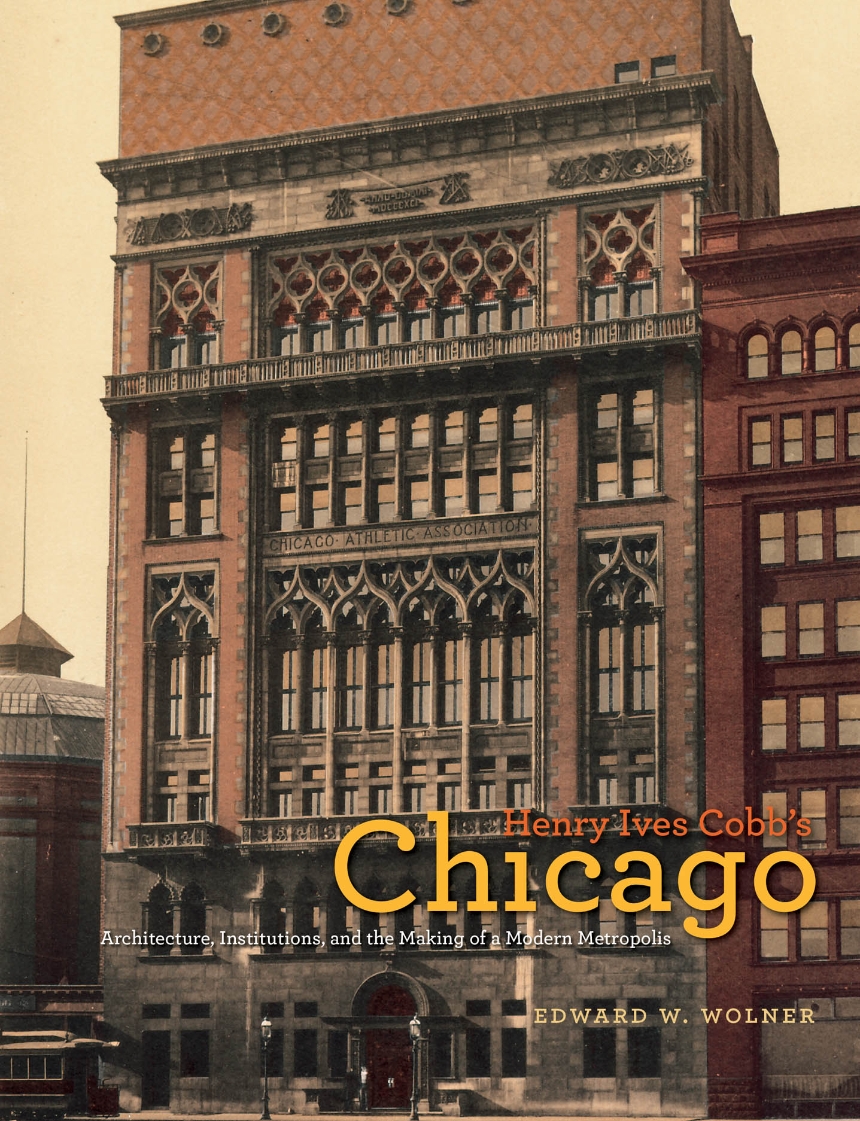Henry Ives Cobb’s Chicago
Architecture, Institutions, and the Making of a Modern Metropolis
Henry Ives Cobb’s Chicago
Architecture, Institutions, and the Making of a Modern Metropolis
When championing the commercial buildings and homes that made the Windy City famous, one can’t help but mention the brilliant names of their architects—Daniel Burnham, Louis Sullivan, and Frank Lloyd Wright, among others. But few people are aware of Henry Ives Cobb (1859–1931), the man responsible for an extraordinarily rich chapter in the city’s turn-of-the-century building boom, and fewer still realize Cobb’s lasting importance as a designer of the private and public institutions that continue to enrich Chicago’s exceptional architectural heritage.
Henry Ives Cobb’s Chicago is the first book about this distinguished architect and the magnificent buildings he created, including the Newberry Library, the Chicago Historical Society, the Chicago Athletic Association, the Fisheries Building for the 1893 World’s Fair, and the Chicago Federal Building. Cobb filled a huge institutional void with his inventive Romanesque and Gothic buildings—something that the other architect-giants, occupied largely with residential and commercial work, did not do. Edward W. Wolner argues that these constructions and the enterprises they housed—including the first buildings and master plan for the University of Chicago—signaled that the city had come of age, that its leaders were finally pursuing the highest ambitions in the realms of culture and intellect.
Assembling a cast of colorful characters from a free-wheeling age gone by, and including over 140 images of Cobb’s most creative buildings, Henry Ives Cobb’s Chicago is a rare achievement: a dynamic portrait of an architect whose institutional designs decisively changed the city’s identity during its most critical phase of development.
400 pages | 145 halftones | 8 1/2 x 11 | © 2011
Chicago Architecture and Urbanism
Architecture: Architecture--Biography
History: American History
Reviews
Table of Contents
Acknowledgments
Introduction
Part I A Proper Bostonian’s Chicago
1 The Union Club, Self-Made Men, and Chicago’s First Period of Growth
2 Three Mansions, Four Self-Makers, and Chicago’s Metropolitan Expansion
3 The Chicago Opera House and the Owings Building: Skyscrapers and Rationalized Work I
4 Cultural Politics and the Newberry Library’s Compartmentalization of Knowledge
Part II Cultural Institutions and Metropolitan Maturity
5 Cobb’s Varieties of the Romanesque
6 Skyscrapers and Rationalized Work II
7 Self-Made Men, Civic Culture, and the University of Chicago (1889–1893)
8 Science, Self-Makers, and the University’s Second Building Campaign (1893–1897)
9 Public Square and the Federal Building: Design, Civic Discourse, and Rationalized Government
Part III Trials and Triumphs Within and Outside Chicago
10 Professional Ethics, Rationalized Government, and the Pennsylvania State Capitol
11 Falls from Grace
12 Chicago in New York
Notes
Bibliography
Index